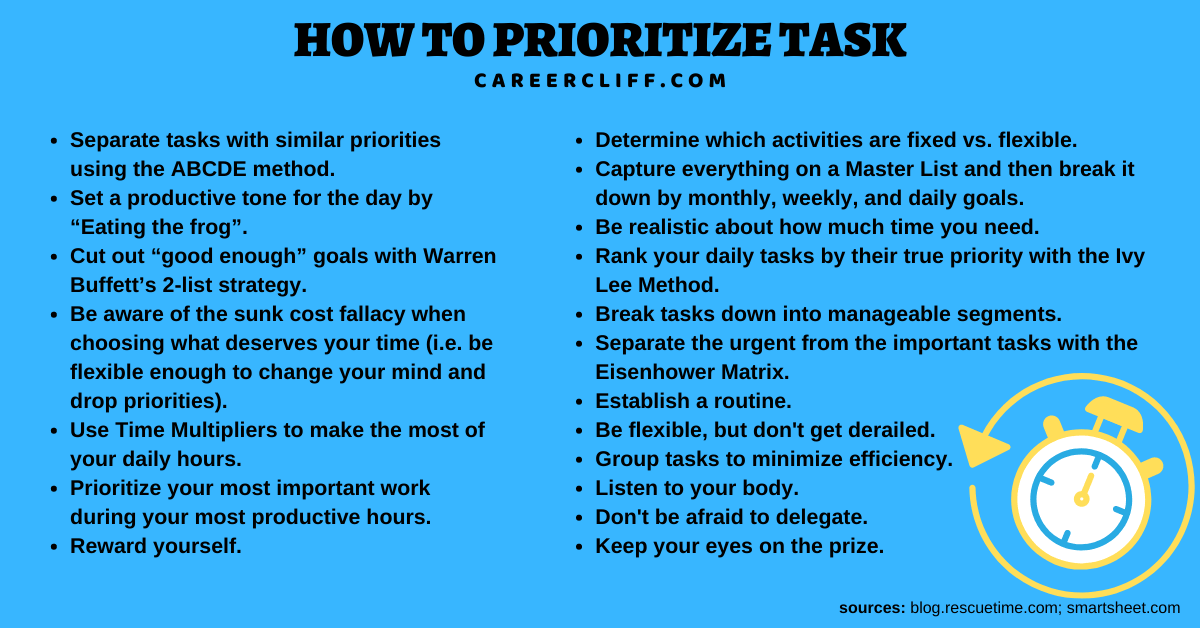

Our lives are constantly changing and the stars are never going to always perfectly align for every single thing on your to-do list. You’ve probably heard it before, but when it comes to prioritizing work like a boss, it’s worth mentioning again.īesides, don’t make checking emails the first thing to do at work! Here’s why. If you could only accomplish five things what would they be? This can be easier said than done, but there are some tips you can use to put into practice. The Pareto principle states that to reach true efficiency and effectiveness nirvana, you should get 80 percent of your results from 20 percent of your effort. If you find yourself so busy that you regularly lack the energy to accomplish your work, then you may need to take a closer look at what can be delegated and deleted. Things change and often when you least expect them to, so it’s important to be flexible and realistic with what you can do. There’s a good chance that you’re not going to get to every single task on your list at the precise time you would like. You’ll begin to notice with more clarity what really is a top priority and what’s a D2. Repeat the process until every task has a letter and a number. Now give each A a number in correspondence with the order you’ll do it in. Look at each item on your list and give it a letter between A and E (with A being the highest priority). Make Your Prioritization Precise With the ABCDE MethodĮverything might seem important, but it’s not and there’s a way to find out what is and what isn’t. ⌄ Scroll down to continue reading article ⌄ 6.

Here’s a graph showing the Triple Constraint, illustrated by the site Project Manager: One method that effective project managers use to help with prioritizing tasks on a large-scale project is by looking at each task as an equilateral triangle. Each priority’s side can be measured by its cost (resources needed to complete it), scope (how big the task is) and time (how long it will take to complete). You don’t necessarily need to assign each priority a label just yet, as there are a few methods to help you cut through the fog. And they’re going to have to if you’re ever going to tackle the top priorities on your list.Įach priority will fall under: do, defer, delegate, and delete. Some of these tasks may very well be top priorities, but others can probably wait.
#Prioritize tasks full#
Start by Asking: What’s Really Important Here?Ĭhances are, you have a pretty full list and that a good deal of them seem like the most important thing or at least top priorities. Don’t worry about the order - we’ll get to that in a minute - just write down everything. Write down the things you need to get done at work today, tomorrow, this week, and this month. It all starts, though, with making a list of what you need to get done.

#Prioritize tasks free#
You’ll get more done, climb the job ladder faster, and have more free time to enjoy life outside of work. Write out All the Things You Need to Doīecoming a master of prioritizing will have numerous benefits. How we adapt to those changes can determine the success or failure of our effectiveness in completing that ever-growing to-do list. Every project manager knows that things come up, fall through, and get moved around. Here’s the thing about prioritization though - it’s always changing. In theory, prioritization is pretty simple: write down what you need to do and then start doing it. This is a skill that takes a good amount of analysis and clear-headed thinking, but once you’ve got the hang of it, it will make your life easier and more seamless. Prioritization involves taking a good look at what you have on your plate each day and figuring out which tasks you’ll do first, and which you’ll leave for the end.
#Prioritize tasks how to#
How to Prioritize When Everything Seems Important

In this article, we’ll look at various ways to help you become a master of time management at work and keep all of those proverbial spinning plates from crashing to the ground. The key to managing all of the work responsibilities on your plate is prioritization. A simple “to-do” list doesn’t always cut it, and it’s easy to feel adrift in a sea of tasks without an oar. Even with all of the advances in modern technology, there are only so many hours in the day to cram in everything that we need to do.


 0 kommentar(er)
0 kommentar(er)
